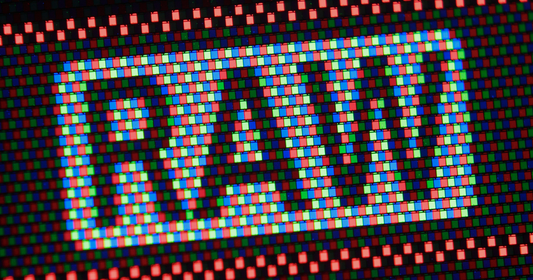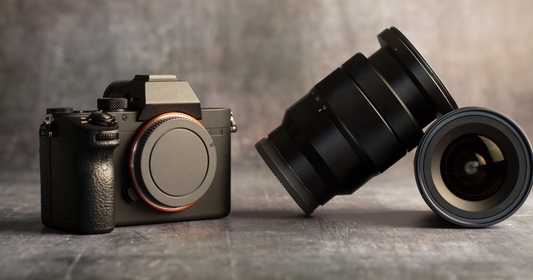I. Introduction
As a photographer, you're probably always looking for ways to improve the quality of your images. One important step in that process is shooting in Raw format. Raw is a file format that captures all the data from your camera's sensor, without any of the in-camera processing that is applied when shooting in JPEG format.
B. Importance of Shooting in Raw
Shooting in Raw format is important because it gives you more control over the final image quality. When you shoot in JPEG format, the camera applies a number of settings (such as white balance, contrast, and saturation) to the image before it is saved to the memory card. While these settings can be adjusted in post-processing, they are more limited than the adjustments that can be made to a Raw file.

By shooting in Raw format, you can adjust settings such as white balance, exposure, and color correction with greater precision and flexibility than with a JPEG file. Additionally, Raw files have greater dynamic range, which means you can recover more detail in both the shadows and highlights of an image.
Overall, shooting in Raw format gives you greater creative control over your images, and can help you produce higher-quality photographs. In the following sections, we'll take a closer look at Raw format and the many benefits it offers for photographers.
II. What is Raw Format?
A. Definition of Raw Format
Raw format is a file format that captures all of the data from a camera's image sensor. Unlike JPEG format, which is a compressed file format, Raw format captures all of the image data without any of the in-camera processing that is applied to JPEG files.
When you shoot in Raw format, the resulting file is larger than a JPEG file, but it contains much more image information. This means that Raw files can be adjusted and edited in post-processing with greater flexibility and control.

B. Raw vs. JPEG
One of the main differences between Raw and JPEG files is the amount of information they contain. JPEG files are compressed and have a limited dynamic range, which means that there is less information to work with in post-processing. Raw files, on the other hand, capture all of the data from the camera's sensor, providing greater dynamic range and more detail in both the shadows and highlights.
Another difference between Raw and JPEG files is the degree of in-camera processing that is applied to the image. When you shoot in JPEG format, the camera applies a number of settings to the image before it is saved to the memory card, including white balance, contrast, and saturation. These settings are not applied to Raw files, which gives you greater control over the final image.
C. Camera Compatibility
Not all cameras are capable of shooting in Raw format, so it's important to check your camera's specifications to see if it supports Raw capture. Most high-end DSLRs and mirrorless cameras support Raw capture, but some compact cameras and older models may not.
If your camera does support Raw capture, it's important to understand the Raw settings and options that are available to you. This will help you capture the best Raw files possible and get the most out of your images in post-processing.

III. Benefits of Shooting in Raw
Shooting in Raw format provides several important benefits for photographers. Here are some of the most significant benefits of shooting in Raw format:
A. More Control Over Image Quality
Shooting in Raw format gives you more control over the final image quality. With Raw files, you have greater control over settings such as white balance, exposure, and color correction. This means that you can fine-tune the image to achieve the exact look that you want.

B. Greater Dynamic Range
Raw files have a greater dynamic range than JPEG files. This means that you can recover more detail in both the shadows and highlights of an image. This is especially important in high-contrast situations, where the camera may struggle to capture all of the detail in the scene.
C. More Detail and Information in Shadows and Highlights
Raw files capture more detail and information in the shadows and highlights of an image. This means that you can bring out more detail in the dark areas of an image without introducing noise, and recover more detail in the highlights without blowing out the image.
D. Increased Editing Flexibility
Raw files provide greater editing flexibility than JPEG files. Because Raw files contain all of the image data from the camera's sensor, you can adjust settings such as exposure, contrast, and saturation with greater precision and flexibility than with a JPEG file.
E. Improved Color Correction
Shooting in Raw format makes it easier to correct color problems in an image. With Raw files, you have greater control over color balance and can adjust the white balance to compensate for different lighting conditions.
F. Reduction in Image Degradation
Because Raw files are not compressed, they do not suffer from the same level of image degradation that JPEG files do. This means that you can make adjustments to a Raw file without sacrificing image quality or introducing noise into the image.
Overall, shooting in Raw format provides many important benefits for photographers. By capturing all of the data from the camera's sensor, Raw files provide greater dynamic range, more detail and information in the shadows and highlights, and greater editing flexibility. This makes Raw format an important tool for any photographer who wants to achieve the best possible image quality.
IV. Common Misconceptions About Shooting in Raw
Despite the many benefits of shooting in Raw format, there are some common misconceptions that can prevent photographers from using this powerful tool. Here are some of the most common misconceptions about shooting in Raw format:

A. Larger File Sizes are a Myth
One of the most common misconceptions about shooting in Raw format is that it results in much larger file sizes than JPEG files. While it is true that Raw files are larger than JPEG files, the difference is not as significant as many people believe. With modern cameras and storage devices, file size should not be a major concern for most photographers.
B. Raw is Not Harder to Use
Another misconception about shooting in Raw format is that it is harder to use than JPEG format. While it is true that Raw files require some additional processing to achieve the best results, most modern photo editing software makes it easy to work with Raw files. In fact, many of the same tools that you use to edit JPEG files can also be used to edit Raw files.
C. Raw is Not Just for Professionals
Many people believe that shooting in Raw format is only necessary for professional photographers. While it is true that professional photographers often shoot in Raw format, it is also a valuable tool for amateur photographers who want to achieve the best possible image quality.
D. Raw is Not a Substitute for Good Photography
Finally, some people believe that shooting in Raw format is a substitute for good photography. While it is true that Raw files provide greater flexibility in post-processing, it is still important to take good photos in the first place. Shooting in Raw format will not compensate for poor composition, bad lighting, or other fundamental issues with the photo.
Overall, there are many common misconceptions about shooting in Raw format that can prevent photographers from taking advantage of this powerful tool. By understanding the truth about Raw format, you can make an informed decision about whether it is the right choice for your photography.
V. Tips for Shooting in Raw
Shooting in Raw format requires a few adjustments to your photography workflow to get the most out of this powerful tool. Here are some tips for shooting in Raw format:

A. Setting Your Camera to Shoot in Raw
To start shooting in Raw format, you will need to adjust your camera's settings. Consult your camera's manual to find the setting for Raw capture. Once you've enabled this setting, your camera will save both a Raw file and a JPEG file for each photo you take.
B. Adjusting Settings for Optimal Raw Capture
To get the best possible results from Raw format, it's important to adjust your camera settings for optimal capture. In general, you will want to set your camera to capture the highest quality image possible. This may involve adjusting settings like ISO, aperture, and shutter speed to get the best possible exposure.
C. Backup and Storage Tips
Raw files can be quite large, so it's important to have a backup and storage strategy in place. Make sure you have enough storage space on your camera's memory card, and consider investing in external hard drives or cloud storage to keep your Raw files safe.
D. Post-Processing in Raw
One of the most powerful features of Raw format is the ability to make extensive edits in post-processing. To get the most out of Raw format, it's important to use a photo editing software that supports Raw files. Look for software that offers advanced editing features like exposure compensation, white balance adjustment, and color correction.
Overall, shooting in Raw format requires a few adjustments to your photography workflow, but the benefits are well worth the effort. By following these tips for shooting in Raw, you can take full advantage of this powerful tool and achieve the best possible results in your photography.
VI. Conclusion
Shooting in Raw format offers a range of benefits for photographers, from greater control over image quality to increased editing flexibility. Here is a brief recap of some of the benefits of Raw format:
- More control over image quality
- Greater dynamic range
- More detail and information in shadows and highlights
- Increased editing flexibility
- Improved color correction
- Reduction in image degradation
If you haven't tried shooting in Raw format before, we encourage you to give it a try. With a few adjustments to your photography workflow, you can take full advantage of this powerful tool and achieve the best possible results in your photography.
In conclusion, Raw format is a powerful tool that can help you achieve better results in your photography. By shooting in Raw format and following the tips outlined in this article, you can take your photography to the next level and achieve the best possible results. So don't be afraid to give Raw format a try – your photography will thank you for it!









